

I’d bet good money that every man in the US owns at least a few types of tie.
Let’s be honest, it’s hard to go through adult life without one! After all, even if you’re a tradesman that would never wear a suit to work, a tie can still come in handy for special events and occasions like weddings, job interviews, and funerals.
But here’s the thing – there isn’t just one type of tie a man can choose from. Across different cultures, formalities, and occasions, there are a number of different types and styles you can pick from. So how do you know which one is the right choice?
In today’s article, I’m breaking the 8 types of tie every man should consider when boosting his style game..
Types Of Tie #1: Standard Necktie


The standard necktie is probably what comes to mind when you think of a tie.
It is also sometimes referred to as a ‘regular’ or ‘straight’ tie and is known for its classic shape and simplistic design.
A standard necktie typically has a skinny blade width with anywhere from 2-6 inches of fabric, depending on the style. Depending on the style, it can have a patterned and colorful finish or a more conservative appearance. Ultimately, it’s one of the most versatile ties a man can wear – so every guy should own at least 2.
The necktie is often used in formal business environments or special occasions such as weddings. For most guys, it’s the ‘safe’ option that will allow you to blend in with the crowd and meet the expectations of most formal environments.
Types Of Tie #2: Bow Tie


Another example of a classic, popular tie is the bow tie.
The bow tie is iconic and has been around since the mid-19th century. Bow ties are known for their unique shape, which looks like – you guessed it – a bow.
Unlike other tie types, the bow tie never has excess fabric and is fastened around the neck with an adjustable buckle or clip. Depending on the occasion, these can come in various colors and patterns.
It features two loops that meet at the center in a symmetrical knot that resembles the shape of a bow. Typically made with silk or cotton, bow ties can be found in several colors, patterns, and sizes to suit any occasion or wardrobe choice.
For many men, a bow tie represents the height of formality. A lot of guys wouldn’t wear a bow tie outside of black tie events and formal occasions.
Types Of Tie #3: Slim Tie


This type of neckwear usually sports thinner blades than regular neckties.
As a slimmer variant of the standard necktie, the slim tie is considered to be slightly more informal than its wider counterpart. The reason for this is simple: a slimmer tie gives off a more modern and stylish vibe, making it ideal for office attire or business-casual occasions.
Typically, a slim tie will have a blade width of around 2-3 inches. It has less fabric than the standard necktie but should still be long enough to reach the middle of your waistband.
This style of tie was popular in the 60s. Many musicians of the period (like The Beatles or The Animals) wore slim-fit, black suits in combination with a white shirt and thin white tie.
Today, it’s more common for men to wear this style of tie with a blazer and jeans/chinos. A patterned slim tie can be a great way of maintaining some level of professionalism while still expressing a more modern and stylish vibe.
Types Of Tie #4: Ascots
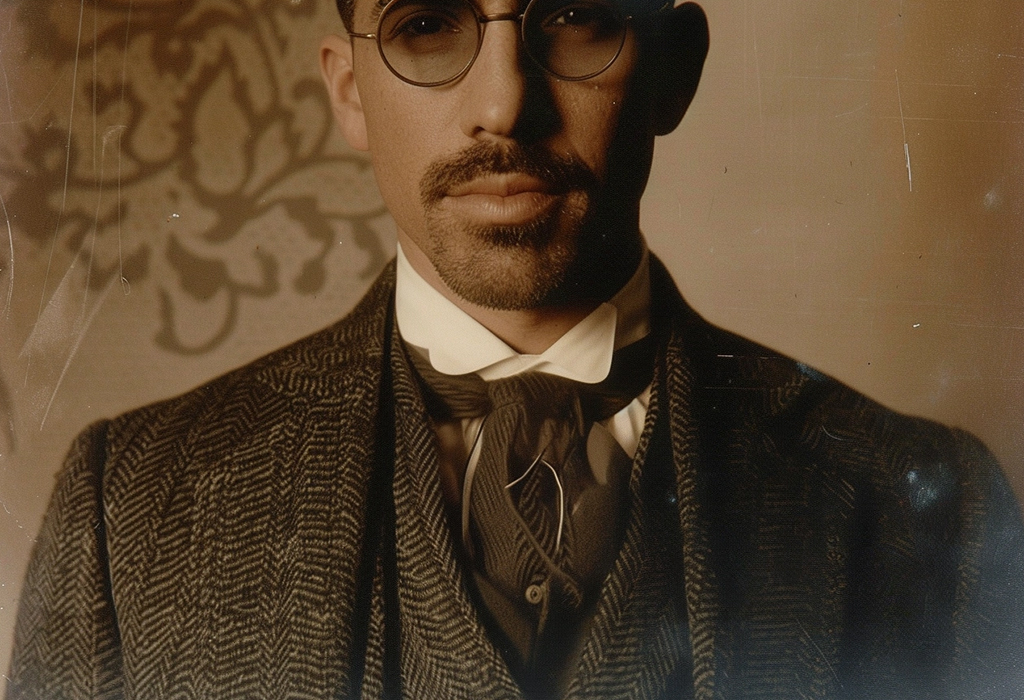

Ascots were originally designed for daytime use back in the 19th century but are now seen primarily during formal events such as weddings or black-tie affairs.
They feature two large wings on each side which come together in an intricate knot at one end – some ascots even have intricate trimming along the edges!
Made with luxurious materials like silk, satin or velvet – this type of tie gives off a sophisticated yet playful vibe when paired correctly in the right situation.
Should you wear an ascot to the office? Absolutely not.
This style of tie should be exclusively reserved for black tie occasions – wear one to work and people WILL judge you for it. No one wants to be laughed at behind their backs.
To tie an ascot, simply loop the two wings around your neck and tuck them in at the front. It should be slightly loose enough that you can slip two fingers underneath it.
Types Of Tie #5: Cravat
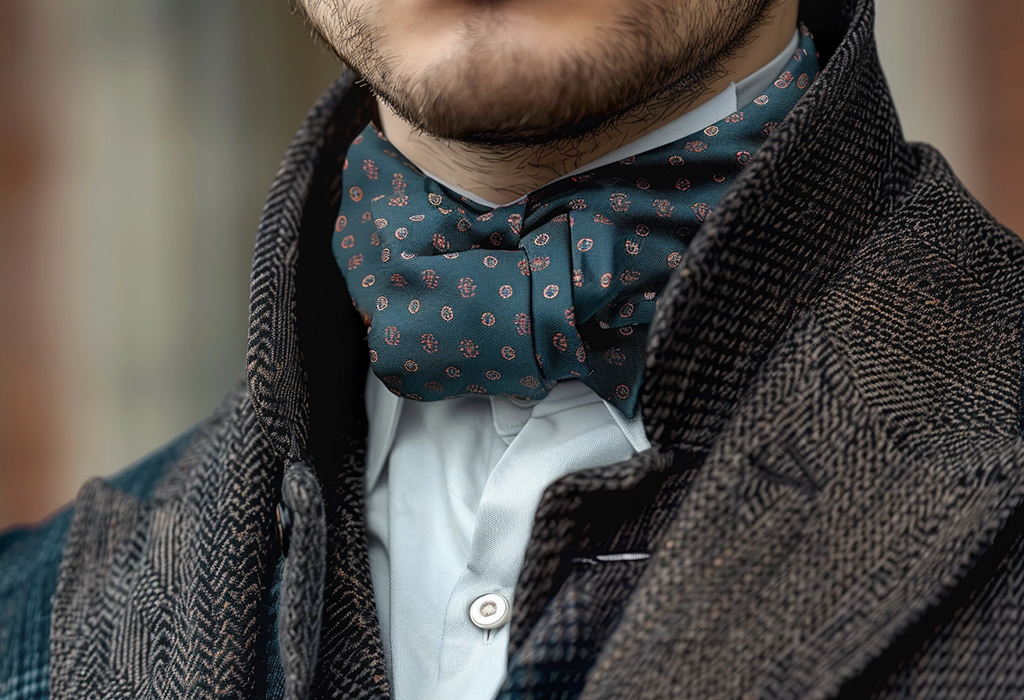

The cravat originated from Croatian soldiers during the 17th Century ‘Cravate’ wars – hence its name!
This type of accessory looks similar to an ascot but tends to be less detailed and lacks wings – rather it stays open across your chest like scarves do today.
Its popularity was revived by British royalty in the 1600s who wore them during formal events; nowadays they are worn mainly at wedding ceremonies or other special occasions where one wants something unique but not overly flashy.
It is possible to wear a cravat in a more informal setting. However, you need to be careful when doing this so as not to appear too stuffy or pretentious.
A simple cravat tucked into the collar of a white shirt can look good with a pair of jeans and brown wing-tip shoes. Think James Bond driving with the top down next to a beautiful woman in the warm hills of Italy… it’s classy, but not too stuffy.
Types Of Tie #6: Kipper Ties
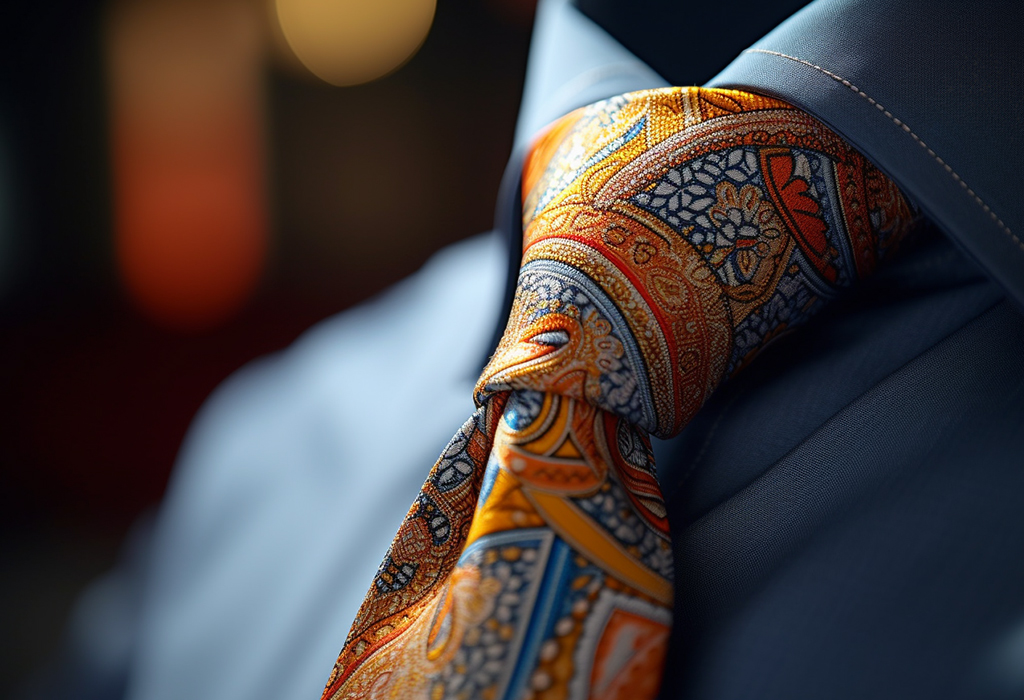

Another variant of the standard necktie, Kipper ties are most commonly characterized by their bright colors and overly-wide appearance.
Traditionally, this type of tie is made out of bright silks that are printed with vivid geometric designs—sometimes featuring stripes–they make quite an impression when worn to weddings or other non-business events.
Would I suggest wearing a kipper tie to the office? That depends.
If you work in a conservative office at the heart of a city’s financial district, then absolutely not. Stick to the traditional necktie in a muted color.
However, if you’re the sort of guy who works in the creative industry then a kipper tie could be a great way of keeping things light at the office.
I think the key takeaway here is to ensure that you consider the situation you’re in and make an informed judgement based on your own experience.
Types Of Tie #7: Knit Ties
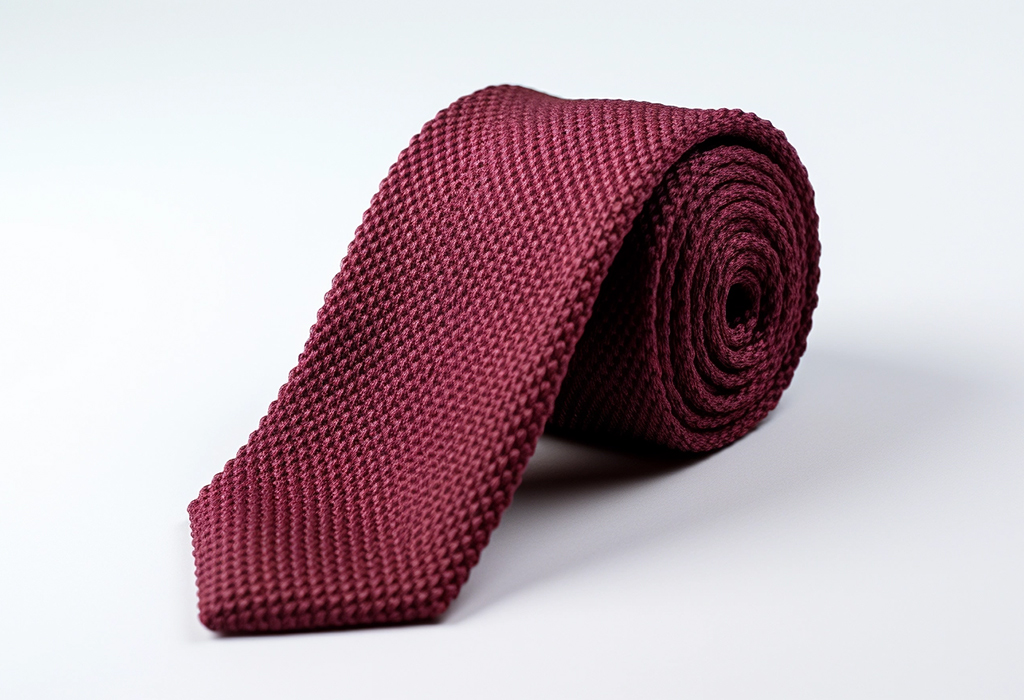

Knit ties combine the comfort of soft knitwear with the sophistication of a classic men’s tie. This combination makes them great for sporting in various situations including business meetings and cocktails parties alike!
A favorite among professionals due to their softness which allows them not to be too restricting around collars; this type of tie typically features small textures giving them depth without being overpowering.
For men who work in conservative work environments, this is probably the most casual tie option you can choose from. It can still be considered formal attire but adds a slight variation to the traditional neck tie which can relieve some of that overbearing office formality.
For guys who work in a more relaxed environment or enjoy wearing ties at the weekend, the knit tie is a great accessory to pair with an Oxford shirt for added comfort and informality.
Types Of Tie #8: Bolo Tie
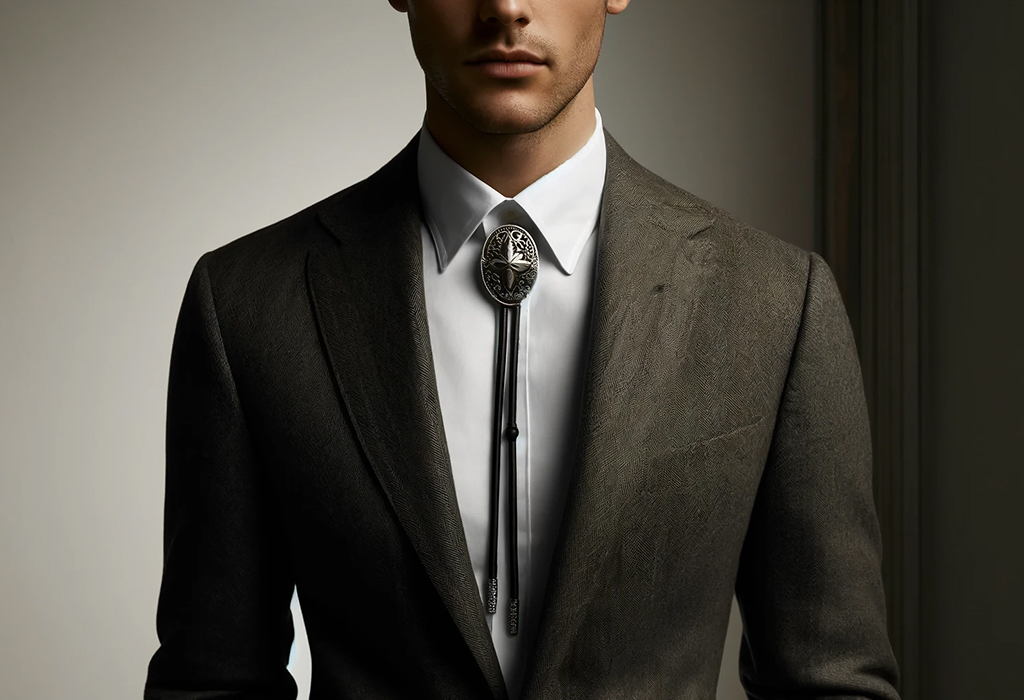

Originating from an old Native American tradition, the bolo tie is probably the most interesting tie option on this list.
Made with leather ropes attached to metal tips at either end and an ornamental centerpiece (often an embossed image), this type of tie adds personality without sacrificing sophistication.
I’ll be honest – the Bolo tie is most commonly associated with the southern states. It’s pretty common to see guys wearing a bolo tie alongside western boots and a matching hat.
However, it’s also a popular option for guys on their wedding day. While many will opt for a formal ascot or bow tie, the more adventurous will consider a Bolo tie as the perfect balance between necktie formality and individual expression.
Whether you opt for a bolo tie on your wedding day or just want to add something extra special to your wardrobe, this is definitely one of those accessories that will stand the test of time and keep you looking stylish year after year.
Looking for more information about men’s accessories to wear with a suit? Click here and learn more.